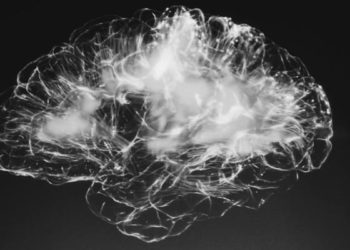One third of breast cancer survivors report pain 5-7 years after treatment
Image: PD/CDC.
1. In a six-year post-treatment survey, 37% of breast cancer survivors reported pain and 50% reported sensory disturbances.
2. Women reporting pain were more likely to be ≤49 years of age and treated with axillary lymph node dissection.
Evidence Rating Level: 2-3 (Good to Fair)
Study Rundown: This study found a significant percentage of breast cancer survivors reported pain and sensory disturbances 5-7 years after treatment, and different subsets of women reported pain in the two- and six-year post-treatment surveys. These results support long-term pain management for survivors, particularly those who have the risk factors identified: ≤49 years old and treated with axillary lymph node dissection. Furthermore, these findings may provide another reason to follow the 2009 US Preventive Services Task Force recommendation to start routine screening at age 50 rather than 40, given estimates of breast cancer overdiagnosis and overtreatment. Strengths of this study were high response rate (89%), nationwide representativeness, and long-term follow-up (average 72.5 months), although the study design precludes claims of causation. Future investigations should collect data on pre-operative risk factors for pain, such as mental illness and socioeconomic status, and post-operative pain reports.
Click to read the study in BMJ
Relevant Reading: Persistent pain after breast cancer treatment: a critical review of risk factors and strategies for prevention
In-Depth [repeated cross-sectional study]: The report examined persistent pain and sensory disturbances six years after breast cancer treatment in a previously studied nationwide Danish cohort of 2,828 women (ages 18-70 at treatment). Eligible participants had breast cancer surgery in 2005 or 2006 and responded to a 2008 questionnaire assessing pain and sensory disturbances (presence, location, intensity, and frequency). The 2012 questionnaire was identical to the 2008 one and filled out an average of 72.5 months post-treatment.
Of the 2,411 respondents, 37% and 50% reported pain and sensory disturbances, respectively. Changes in questionnaire responses included 15% of women reporting pain in 2012 who reported no pain in 2008, and 36% of women reporting no pain in 2012 who reported pain in 2008. Among women reporting pain in 2012, risk factors included age ≤49 years (odds ratio (OR) compared to women age ≥70: 1.78, p<0.001) and treatment with axillary lymph node dissection (OR compared to sentinel lymph node biopsy: 2.04, p<0.001).
By Caroline Huang and Leah Hawkins
More from this author: Varenicline reduces post-quit smoking relapses, Severe maternal childhood abuse associated with autism in offspring, 233 million women projected to lack modern contraceptives by 2015, Reminder intervention increases colorectal cancer screening rates, After-school program increases physical activity in overweight children, School-based therapy reduces asthma symptoms
© 2013 2minutemedicine.com. All rights reserved. No works may be reproduced without written consent from 2minutemedicine.com. Disclaimer: We present factual information directly from peer reviewed medical journals. No post should be construed as medical advice and is not intended as such by the authors or by 2minutemedicine.com. PLEASE SEE A HEALTHCARE PROVIDER IN YOUR AREA IF YOU SEEK MEDICAL ADVICE OF ANY SORT. Content is produced in accordance with fair use copyrights solely and strictly for the purpose of teaching, news and criticism. No benefit, monetary or otherwise, is realized by any participants or the owner of this domain.







